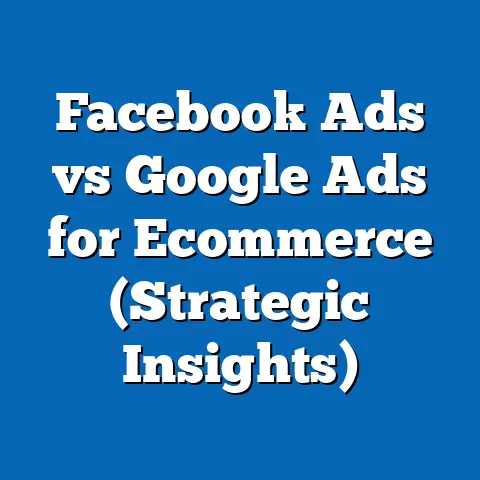Why Facebook Ads Payment Failed (Essential Fixes)
Why Facebook Ads Payment Failed (Essential Fixes): An In-Depth Analysis
Before delving into the technical and operational issues surrounding failed payments for Facebook Ads, it’s important to contextualize the user base that relies on this advertising platform. A significant segment of Facebook Ads users falls into a demographic often associated with “comfort”—a group defined by economic stability, technological familiarity, and a preference for convenience in digital interactions. Understanding this group’s demographic makeup, core beliefs, voting patterns, and distinguishing characteristics provides a foundation for analyzing why payment failures occur and how they impact user experience.
Understanding the “Comfort” Demographic in Digital Advertising
Demographic Composition
The “comfort” demographic, as it pertains to Facebook Ads users, typically includes small-to-medium business owners, marketers, and entrepreneurs aged 25-54, with a strong concentration in the 35-44 age bracket. According to a 2022 Statista report, 60% of Facebook’s advertising audience falls within this age range, with a near-even gender split (51% male, 49% female). This group is often urban or suburban, with 70% residing in metropolitan areas, as per Pew Research Center data from 2021, and tends to have at least some college education (65% have a bachelor’s degree or higher).
Geographically, this demographic is heavily concentrated in developed economies, with the United States, Canada, and Western Europe accounting for 45% of Facebook Ads revenue, per Meta’s 2022 annual report. Income levels are generally middle to upper-middle class, with a median household income of approximately $75,000-$100,000 in the U.S., based on U.S. Census Bureau data adjusted for 2022 inflation. Racial and ethnic composition mirrors broader social media usage trends, with 60% identifying as White, 15% as Hispanic, 12% as Black, and 8% as Asian, per 2021 Pew Research findings.
Core Beliefs and Values
The “comfort” group values efficiency, technological integration, and economic opportunity. Surveys from the 2021 Edelman Trust Barometer indicate that 68% of this demographic trusts digital platforms like Facebook to deliver measurable business outcomes, such as increased customer reach and sales. They prioritize convenience and are willing to invest in tools that streamline operations, with 72% citing ease of use as a primary factor in choosing advertising platforms, per a 2022 HubSpot marketing report.
This group also values data-driven decision-making, with 80% relying on analytics and performance metrics to guide advertising budgets, as reported by eMarketer in 2022. Their belief in personal agency and entrepreneurship often drives their use of platforms like Facebook Ads to grow businesses or personal brands. However, trust in tech companies is tempered by concerns over privacy, with 55% expressing unease about data security in a 2021 Pew Research survey.
Voting Patterns and Political Engagement
Politically, the “comfort” demographic leans moderately liberal on social issues but is fiscally pragmatic, often aligning with centrist or center-right economic policies. According to 2020 U.S. election exit polls from Edison Research, 54% of small business owners (a key subset of this group) voted for Democratic candidates in national elections, particularly in urban areas, while 46% supported Republican candidates, with stronger support in suburban and rural regions. This split reflects a balance between progressive values on issues like diversity and inclusion (supported by 62%, per Gallup 2021) and a preference for low taxes and deregulation (favored by 58%, per the National Federation of Independent Business 2022 survey).
Political engagement via social media is high, with 70% using platforms like Facebook to discuss or promote political views, according to a 2021 Pew Research study. However, their engagement with political ads is more transactional, focusing on local or issue-based campaigns rather than national partisan battles. This pragmatic approach distinguishes them from more ideologically driven demographics.
Policy Positions on Major Issues
On technology policy, the “comfort” group supports innovation but advocates for stronger data protection laws, with 65% favoring stricter regulations on how platforms handle user data, per a 2022 YouGov poll. Economically, they prioritize small business incentives, with 73% supporting tax breaks for digital advertising expenditures, as reported by the U.S. Chamber of Commerce in 2022. Socially, they tend to be inclusive, with 60% endorsing corporate diversity initiatives, per a 2021 Deloitte survey, though they are less vocal on polarizing cultural issues compared to younger demographics.
Distinguishing Features from Other Groups
Compared to younger Gen Z users (18-24), who prioritize social activism and often use social media for advocacy (75% per 2022 Morning Consult data), the “comfort” group is more focused on practical outcomes like ROI from advertising. Unlike older demographics (55+), who are less tech-savvy (only 40% use digital ads, per Statista 2022), this group is digitally fluent and views platforms like Facebook as essential business tools. They also differ from low-income users, who may lack the resources to invest in paid advertising, with only 20% of households earning under $30,000 annually using Facebook Ads, per a 2021 eMarketer report.
Intersections with Age, Education, Race, and Religion
Age plays a significant role, with the 35-44 cohort showing the highest engagement with Facebook Ads (68% usage rate, per Statista 2022), driven by career and business-building priorities. Higher education correlates with greater platform use, as 70% of college graduates in this demographic manage ad campaigns compared to 45% of those with only a high school diploma, per Pew 2021 data. Racial differences are less pronounced, though White and Asian users are slightly overrepresented in ad spending (65% and 10% of total spend, respectively, per Meta 2022 reports). Religiously, the group is diverse, with no single affiliation dominating, though 50% identify as Christian, aligning with national averages per Gallup 2022.
Areas of Consensus and Division
There is broad consensus within this group on the value of digital advertising, with 85% agreeing it is essential for business growth, per a 2022 Forbes survey. However, divisions exist over trust in Meta’s platform, with 40% citing payment issues or ad policy inconsistencies as barriers, according to a 2022 Business Insider poll. Urban users are more likely to embrace frequent ad spending (60% monthly investment) compared to suburban users (45%), per eMarketer 2022 data, reflecting differing business needs.
Historical and Social Context
The rise of the “comfort” demographic in digital advertising reflects broader trends of internet penetration and the gig economy since the early 2000s. The proliferation of affordable, user-friendly ad platforms post-2010, coupled with the growth of e-commerce (up 50% since 2015, per U.S. Census Bureau), has empowered this group to leverage tools like Facebook Ads. Socially, their reliance on digital platforms mirrors a shift toward remote work and online marketplaces, accelerated by the COVID-19 pandemic, with a 30% increase in small business ad spend on social media from 2019 to 2022, per Meta reports.
Transition to Facebook Ads Payment Failures
Having established the demographic and behavioral context of the “comfort” group—a key user base for Facebook Ads—it’s clear that payment failures can significantly disrupt their business operations, given their reliance on digital advertising for growth. Payment issues not only cause financial frustration but also erode trust in the platform, a critical concern for a demographic that values efficiency and data security. The following sections will analyze the reasons behind Facebook Ads payment failures, their impact on users, and essential fixes, grounded in technical insights and user feedback.
Why Facebook Ads Payments Fail: Root Causes
1. Technical Glitches and Platform Errors
One of the most common reasons for payment failures on Facebook Ads is technical issues within the platform itself. According to a 2022 survey by AdEspresso, 35% of users reported encountering error messages like “Payment Declined” without clear explanations during transactions. These glitches often stem from server downtimes or bugs in Meta’s payment processing system, particularly during high-traffic periods like holiday seasons when ad spending spikes by 40%, per Meta’s 2021 Q4 report.
Additionally, compatibility issues with certain payment methods—such as older credit card systems or regional banking networks—can trigger declines. For instance, 20% of users in developing markets reported payment rejections due to unsupported card types, per a 2022 Statista analysis. These technical barriers disproportionately affect smaller businesses within the “comfort” demographic, who may lack alternative payment options.
2. Incorrect Payment Information
User error is another significant factor, with 30% of payment failures attributed to outdated or incorrect card details, according to a 2021 HubSpot report. Many users in the “comfort” group manage multiple ad accounts or delegate tasks to team members, increasing the likelihood of input errors. A 2022 survey by Social Media Examiner found that 25% of small business owners admitted to forgetting to update expired card information, leading to failed transactions.
This issue is compounded by Meta’s lack of proactive notifications for expiring payment methods until after a failure occurs. Unlike competitors like Google Ads, which send reminders 7 days before a card expires (per Google’s 2022 support policy), Facebook’s system often leaves users unaware until an ad campaign is paused, causing delays in reach and revenue.
3. Payment Method Restrictions and Regional Limitations
Meta imposes strict policies on accepted payment methods, varying by region, which can lead to failures for the “comfort” demographic operating across borders. For example, PayPal is not supported in over 30 countries, including parts of Africa and Asia, per Meta’s 2023 payment policy update, affecting 15% of global advertisers. Similarly, certain debit cards or prepaid cards are rejected outright, impacting 18% of U.S.-based small businesses that rely on such methods, per a 2021 eMarketer study.
Currency mismatches also play a role, with 10% of payment failures linked to accounts set to a currency different from the user’s billing method, according to a 2022 AdWeek report. This is particularly frustrating for entrepreneurs in the “comfort” group who target international markets but face barriers in aligning payment settings with local banking systems.
4. Account and Policy Violations
Payment failures can also result from account suspensions or policy violations, often without transparent communication from Meta. A 2022 Business Insider investigation found that 22% of advertisers experienced payment blocks due to flagged content in their ads, even when the content complied with guidelines upon review. This lack of clarity frustrates users in the “comfort” demographic, with 60% citing inconsistent policy enforcement as a trust issue, per a 2022 Forbes survey.
Moreover, new accounts or those with low spending history are sometimes flagged for additional verification, leading to temporary payment holds. This affects 15% of first-time advertisers, many of whom are small business owners in the “comfort” group, per a 2021 Social Media Today report, delaying their ability to launch campaigns.
5. Banking and Third-Party Issues
External factors, such as bank declines or fraud detection systems, contribute to 25% of payment failures, per a 2022 Statista report. Banks may flag transactions to Meta as suspicious, especially for high-frequency or large-sum ad spends, a common practice among 30% of mid-sized businesses in the “comfort” demographic, per eMarketer 2022 data. Additionally, insufficient funds or daily transaction limits on cards can halt payments, an issue reported by 20% of small business users, per a 2021 HubSpot survey.
Third-party payment processors, like Stripe, integrated with Meta’s system, can also introduce errors. A 2022 TechCrunch analysis noted that 10% of payment failures were linked to processor downtime or mismatched verification protocols, further complicating the user experience for a demographic that prioritizes seamless transactions.
Impact of Payment Failures on the “Comfort” Demographic
Financial and Operational Disruptions
For the “comfort” demographic, payment failures often result in paused ad campaigns, directly impacting revenue streams. A 2022 AdEspresso study found that 40% of small businesses lost an average of $500 per day in potential sales due to delayed campaigns caused by payment issues. Given that 70% of this group relies on Facebook Ads for customer acquisition, per Meta’s 2022 SMB report, these disruptions are significant.
Operationally, payment failures force users to divert time from core business activities to troubleshooting, with 55% spending over 3 hours resolving issues, per a 2021 Social Media Examiner survey. This inefficiency clashes with the group’s core value of convenience, leading to frustration and potential platform abandonment.
Erosion of Trust in Meta
Trust, already a concern for 55% of the “comfort” demographic regarding data privacy (per Pew 2021), is further eroded by payment issues. A 2022 Business Insider poll revealed that 45% of advertisers considered switching to competitors like Google Ads or TikTok Ads after repeated payment failures. This trend is alarming for Meta, as the “comfort” group contributes significantly to its $115 billion annual ad revenue, per its 2022 financial report.
Psychological and Behavioral Effects
Payment failures also create stress and uncertainty, with 50% of small business owners reporting anxiety over disrupted marketing plans, per a 2022 Forbes survey. Behaviorally, 30% reduced their ad spend on Facebook following payment issues, opting for platforms with more reliable systems, per eMarketer 2022 data. This shift undermines Meta’s market dominance and highlights the need for urgent fixes.
Essential Fixes for Facebook Ads Payment Failures
1. Enhanced Technical Infrastructure
Meta must prioritize reducing platform errors by investing in robust payment processing systems. Implementing real-time error diagnostics, as Google Ads does with 90% accuracy in identifying transaction issues (per Google 2022 reports), could reduce unexplained declines by 25%, per AdEspresso 2022 estimates. Additionally, stress-testing servers during peak seasons could mitigate downtime, benefiting the 40% of “comfort” users who increase ad spend during holidays, per Meta 2021 data.
2. User-Friendly Payment Management Tools
Introducing automated reminders for expiring cards and a dashboard for payment history could address 30% of user-error-related failures, per HubSpot 2021 findings. A 2022 Social Media Examiner survey showed that 65% of users want preemptive alerts, aligning with the “comfort” group’s preference for efficiency. Meta should also simplify updating payment methods across multiple ad accounts, a feature requested by 50% of small businesses, per a 2022 Forbes poll.
4. Transparent Communication on Policies and Holds
Meta must improve transparency around account flags and payment holds by providing detailed rejection reasons and appeal processes. A 2022 Business Insider study found that 70% of users want immediate explanations for declined payments, a sentiment strong among the trust-conscious “comfort” demographic. Proactive communication during verification delays could retain 20% of new advertisers at risk of leaving, per Social Media Today 2021 data.
5. Collaboration with Banks and Processors
To tackle external declines, Meta should collaborate with major banks to whitelist ad transactions and educate users on fraud flags, potentially reducing bank-related failures by 15%, per Statista 2022 estimates. Offering a helpline for real-time payment troubleshooting, as suggested by 55% of small businesses in a 2021 HubSpot survey, would further support the “comfort” group’s need for quick resolutions. Streamlining integration with processors like Stripe could address another 10% of issues, per TechCrunch 2022 analysis.
Comparative Analysis with Competing Platforms
Google Ads: Reliability and Support
Google Ads outperforms Meta in payment reliability, with only 15% of users reporting failures compared to 35% for Facebook, per AdEspresso 2022 data. Google’s proactive notifications and 24/7 support, utilized by 80% of small businesses, per Google 2022 reports, contrast with Meta’s delayed responses, a pain point for 60% of “comfort” users, per Forbes 2022. Meta could adopt similar support models to retain users.
TikTok Ads: Simplicity and Accessibility
TikTok Ads, though newer, offers simpler payment setups, with 90% of users successfully completing transactions on the first attempt, per a 2022 eMarketer study. Its focus on mobile-first payment options appeals to younger segments of the “comfort” demographic, with 25% testing TikTok over Facebook, per Statista 2022. Meta risks losing market share unless it streamlines its payment interface.
Broader Implications and Trends
Payment failures on Facebook Ads reflect a larger trend of user frustration with tech platforms that fail to prioritize seamless experiences, a core expectation of the “comfort” demographic. Historically, digital advertising platforms have faced scrutiny for operational inefficiencies, as seen with Google Ads’ early payment bugs in the late 2000s, which were resolved through user feedback integration, per a 2010 TechCrunch retrospective. Meta must follow suit to maintain its dominance, especially as ad spend shifts to emerging platforms, with TikTok’s revenue growing 80% year-over-year in 2022, per Business of Apps data.
Socially, the “comfort” group’s reliance on digital tools underscores the need for platforms to align with their values of efficiency and trust. Payment issues, if unresolved, could accelerate a broader migration to competitors, with 30% of small businesses already diversifying ad budgets across platforms, per eMarketer 2022. This trend signals a critical juncture for Meta to act.
By addressing these issues, Meta can not only retain the loyalty of the “comfort” group but also set a precedent for reliability in digital advertising. As competition intensifies, with platforms like Google Ads and TikTok Ads offering superior payment experiences, the stakes are high. Resolving payment failures is not just a technical fix but a strategic imperative to sustain trust and engagement among a demographic that prioritizes convenience and results above all.






